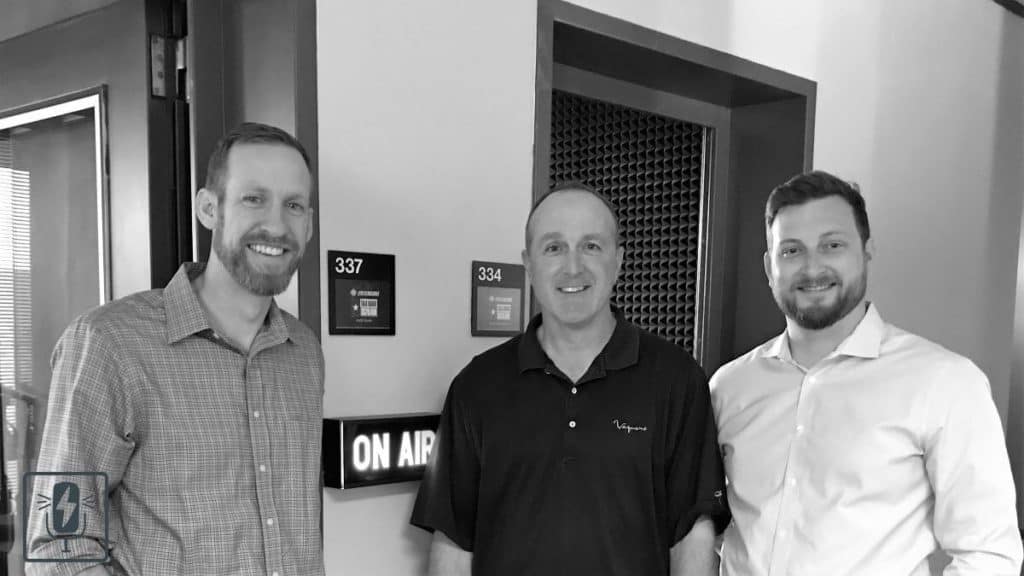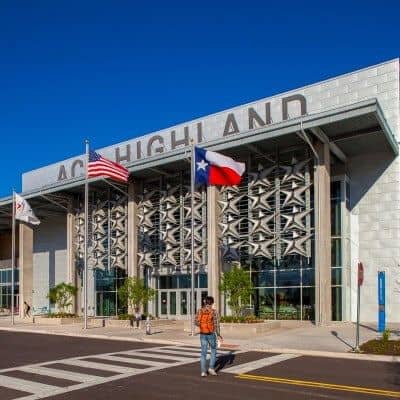Episode 39 | April 16, 2019
Austin native Matt Whelan has built a career in real estate development with an emphasis on sustainability. From his very first development to the projects awarded to RedLeaf Properties, the company he founded ten years ago, he has been involved in Austin’s most notable and recognizable development projects. This includes the Spanish Oaks community and golf course, the redevelopment of the Mueller airport, and the transformation of Highland Mall with Austin Community College.
Spanish Oaks Community
Matt Whelan’s first development project, the Spanish Oaks community in west Austin just outside Bee Cave, started him on the path towards sustainable development. The land was in an environmentally sensitive watershed at the confluence of Barton and Little Barton Creek, and the development plan respected the waterways. The golf course was placed on higher ground and uses reclaimed water for irrigation. Other key green features of the community included minimizing impervious cover and mitigating endangered species issues.
Mueller Airport Redevelopment
Whelan went to work for Catellus Development Group in 2006, at which point the City of Austin had already awarded the project to redevelop the old Robert Mueller Municipal Airport into a sustainable mixed-use community. In partnership with the city, the neighborhoods around the property had gone through a long process to create a vision for what they wanted Mueller to be. Catellus was selected for the project after a national search and partnered closely with the city and neighbors to implement their vision.
“It had a tremendous foundation of forethought into what the end result should be,” says Whelan, “and that paid incredible dividends.”
The neighborhood is known as a pioneer of urban-infill, high-density, mixed-use neighborhoods. The emphases on green building, mobility, and community throughout every aspect of the project master plan was driven by the city’s values and was shared by Catellus and the neighbors. “[Sustainability] was a foundational value for the project, and the same for the surrounding community,” he explains. “That was just an important value from the beginning, and so every step and every part of the project was implemented with that in mind.”
Whelan’s experience at Mueller served as an accelerator for the way he approached sustainability on future projects. He says that the project expanded his sense of what is possible. It gave everyone involved a broader appreciation of the opportunities and more depth at the cutting edge of environmental and community design.
Highland Mall Redevelopment
Whelan notes that Highland Mall was Austin’s first regional mall and a source of pride for the community for many years. The state Governor even attended the ribbon-cutting ceremony. A couple of decades ago it began to decline as did many malls throughout the country. “It was ripe for repurposing,” he notes.
RedLeaf formed a partnership with Austin Community College (ACC) in 2009, acquired the property in parcels over time, and worked hand-in-hand with the college to develop a plan.
As with Mueller, the surrounding neighborhoods already had a clear vision for what they wanted the property to be. The site would become a mixed-use, regional activity center, but the idea was bigger and bolder than that. The ultimate goal was to oversee a rebirth, bringing vitality and energy back to the area. “It was a vision born from the community as opposed to from a developer,” Whelan says.
Highland is a major innovation campus for ACC, so education is a huge focus and the predominant use. RedLeaf is handling the commercial development, which includes housing, offices, and retail that will be built around the campus. The project is about 50 percent complete and will continue over the next five to ten years to integrate academic, professional, and daily life.
According to Whelan, it was important to the college to have an environment that is exciting and attractive and has amenities for students, faculties, and administrators. “It creates better success rates for students,” he says, “and allows for more robust partnerships between industries that ultimately will be hiring their students and the college.”
When the project started, Highland had 1.2 million square feet of space and 5,500 parking spaces, with 98% impervious cover over its 81 acres. The entire mall is being converted from a 1970s-era retail space into a state of the art learning and partnership environment for ACC. The parking spaces are being converted to four and five story buildings along with structured parking garages for higher density. In addition to the buildings, the site will have three parks and over a mile of trails. Whelan states, “We are literally removing parking lot and putting in parks.”
Key Sustainability Features of the Highland Mall Campus
The dense mixed-use design addresses many environmental and social goals:
- Mobility and transit: reduced dependence on cars, encouraging pedestrian and bicycle mobility, public transportation access via a MetroRail red line stop and nearby bus node
- Energy: highly efficient LEED certified buildings, reflective roofing to reduce ambient temperatures, onsite rooftop solar energy
- Water protection: water runoff treatment before it goes into the rivers, recycling rainwater for irrigation
- Air: 1,000 trees are being planted, reducing impervious cover which reduces the heat island effect
- Social: affordable housing
- Economic: Educational and employer partnerships

The RedLeaf Philosophy and the Future
Whelan explains that RedLeaf Properties’ core competency is redevelopment and describes the firm’s perspective on sustainability as using a very broad approach, staying on the leading edge of the latest green design trends, and developing close partnerships with project stakeholders. “Our expertise,” he says, “is in finding creative solutions to challenging projects…how to make people’s visions become reality.”
That specialized experience and leadership are evident in two future RedLeaf projects.
The first is Bell Boulevard, a stretch of road along old Hwy 183 in Cedar Park, which selected RedLeaf as their development partner a few months ago. With multiple property owners, different property types, and outdated and obsolete low-density real estate, transforming this space into higher density mixed use projects is a complex and exciting project.
Another project with the City of Austin involves a new procurement method for a high performance building with water reclamation that can be delivered to the city much faster and cheaper than usual.
Learn more about the company’s philosophy and latest projects at RedLeaf-Properties.com.
LINKS AND RESOURCES
- The Highland Mall redevelopment story from Austin Monthly, Austin-American Statesman, and Build a Better Burb
- Highland Neighborhood
- Highland Greenway Park
- Bell Boulevard Redevelopment in Cedar Park
- Sustainability in Mueller
- Spanish Oaks
For more great interviews with Texas business leaders who are using 21st century tools to reduce their environmental footprint and improve their profitability make sure to check tune in Texas Energy Lab Radio each week!
Listen to our season one wrap-up show in which we recount our favorite episodes, share what we’ve learned over the past year.
